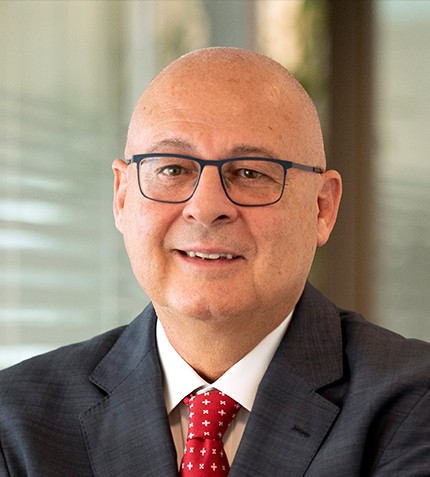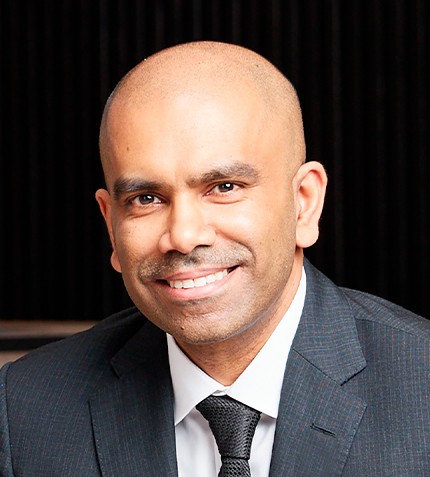
"International suppliers face the problem of understanding such a vast market, especially given the differences in language and culture across the sub-continent. All suppliers want to be in India. However, without our localized expertise, they are likely to face a range of issues, including understanding India’s complex tax structures, the regulatory framework and supply chain."
L Balakrishna
MANAGING DIRECTOR – INDIA, BRENNTAG
Can you introduce our readers to Brenntag’s operations in India?
Brenntag entered India with the acquisition of the Rhodia distribution network in 2008, and we further strengthened our position with the acquisition of EAC Industrial Ingredients in 2010. M&A has been an integral part of our growth strategy in India and we most recently acquired a 65% stake in Raj Petro Specialties, which distributes its own-blended brands of petroleum-related products. This is a perfect fit and complement to our current product offering. Raj Petro Specialties has a foothold in many industries in which we are not present, including white oil, petroleum jetties and certain lubricants. It also provides us with a scale of operation that we did not previously have in India, including blending and packaging facilities.
India has been a strategic priority and a key investment target for Brenntag. Away from M&A activity, how has the company demonstrated its commitment to the Indian market?
We recently celebrated the completion of our state-of-the-art, 100,000 sq./ft., warehousing facility. We made substantial investment in the facility and it underlines our commitment to this market as well as the safety of our employees. It brings together the previous five warehouses we had across the western region under one roof. It is more compliant and efficient as well as having the capacity to take care of our warehousing requirements for the next five years. Moreover, we have continued to invest in our organization in India and our employees, whose expertise is the bedrock to our success.
What are the main challenges facing end-users and suppliers in India?
One of the challenges most customers face is optimizing their supply chain costs. Through our customer centricity program, we are able to help our customers consolidate their supply chain through one channel. Instead of having 50 different vendors supplying products, they are able to reduce this to only five vendors.
International suppliers face the problem of understanding such a vast market, especially given the differences in language and culture across the sub-continent. All suppliers want to be in India. However, without our localized expertise, they are likely to face a range of issues, including understanding India’s complex tax structures, the regulatory framework and supply chain.
With a supply shortage in China following new environmental regulations affecting global distribution channels, how are you seeing India’s role as a supplier change?
India is going to become a regional manufacturing hub. The government has launched the Make in India campaign and a lot of effort has been put to make the regulatory and macroeconomic environment conducive to this. However, India remains a net importer of a number of feedstocks and there needs to be the right import strategy put in place.
The industry will grow, supported by the government. Recently new import procedures have been eased and time taken to clear shipments has become more efficient. Additionally, the new consolidated tax structure – the GST - led to India increasing by 30 places in the World Bank’s ‘Ease of Doing Business’ Index.
How are you able to connect your suppliers with the end users in such a vast market?
We have our own application laboratories, including food and personal care, where we generate an end product that our customers are able to experience. We also work closely with our suppliers with respect to this, who have their own application laboratories. Application helps to reduce the development cycle time and also develop more confidence in the products we sell.
India still has very low consumption of chemicals per capita. What role can Brenntag play to increase chemical usage and subsequently development?
Many of India’s industries remain underdeveloped in terms of usage and consumption. With respect to agrochemicals, how does one feed 1.3 billion? It is only by increasing the efficiency of agriculture, and the agrochemical industry will have to innovate to facilitate the development of more tailor-made products. This is where we are able to connect our suppliers and end-users to help develop the necessary solutions. This needs to be replicated in all our end-user industries, including paints & coatings, feed, mobility and personal care. Businesses are expected to step up and meet the growing demand.
Can you provide a final message for our readers from Brenntag?
India’s growth is here to stay. China has its own growth path but that growth is largely state driven, whilst India’s is more market driven. India is a market that will deliver growth for a long time. There are many companies that are focusing on India, including ourselves. Brenntag is constantly looking at more acquisitions to take us to the next level. If anyone is doubting India or still thinking about being here, they should just take the plunge and invest.










